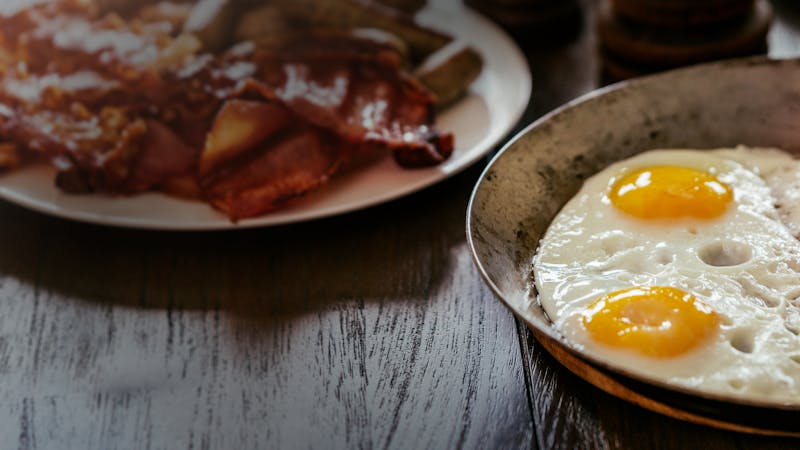How to lower LDL cholesterol on a low-carb diet
Discuss any changes in your labs, medications, and lifestyle with your doctor. Full disclaimer
Other controversial topics related to a low-carb diet, and our take on them, include saturated fats, cholesterol, whole grains, red meat, salt, and restricting calories for weight loss.
Whether or not cholesterol is the most important risk factor for heart disease in people who eat a low-carb diet — and whether or not lowering it is important — remains to be proven.
It may be hard to imagine abandoning a way of eating that has helped you lose weight, improve blood sugar and insulin resistance, normalize blood pressure, decrease hunger, or provides other benefits. Fortunately, there are ways to lower your LDL without losing the many positive effects of a low-carb lifestyle.
Don’t confuse total cholesterol with LDL
Some doctors still focus on total cholesterol as an important number. However, since total cholesterol is made up of LDL and HDL cholesterol, we don’t know if increased total cholesterol is due to an increase in LDL, HDL, or both.
In addition to the possible effect of increasing LDL, low-carb diets are also well-known for consistently raising HDL, which will in turn increase total cholesterol.
Understand the difference between LDL-C and LDL-P
Most cholesterol blood tests measure LDL-C, the total amount of cholesterol carried in our LDL particles. However, LDL-P, or the total number of LDL particles in our blood, is an even better marker of cardiovascular risk.
How does this happen? Studies show that carbohydrate restriction can change small LDL particles into larger ones.
How to lower LDL cholesterol on low carb
Cut excess saturated fat
Sometimes a small change can make a significant difference. Although this is based mostly on clinical experience, simply eliminating extra liquid saturated fat may normalize LDL levels.
Some people may find that limiting their saturated fat intake to whole foods (beef, cheese, eggs, etc.) is all it takes to improve LDL levels.
Consider swapping saturated fats for unsaturated fats
For some, making small changes like the ones listed above won’t be enough to produce a meaningful change in LDL. Instead, they may need to reduce saturated fat from all sources and replace it with mono- and polyunsaturated fats. In practice, that means less beef, cheese, and cream – and more fish, macadamia nuts, avocados, and olive oil.
Liquid polyunsaturated fats, such as seed oils, remain a point of contention. This is because observational studies show a small cardiac benefit, but randomized, controlled trials (RCTs) show they can reduce LDL but may increase both cardiovascular events and risk of dying.
Another option is to switch to a vegetarian or vegan keto/low-carb diet, which is typically lower in saturated fat. You can find more details in our guides on vegetarian and vegan low-carb diets.
Many people find that reducing or eliminating saturated fats while still remaining on a LCHF diet successfully lowers LDL cholesterol. The more pressing question is if this is a sustainable eating pattern. The answer is highly individualized and requires personal experimentation.
Eat plenty of fiber
Fiber-rich and keto-friendly foods like avocados, leafy greens, nuts and seeds could potentially lower LDL cholesterol.
Practice time-restricted eating
The data on time-restricted eating and lipids are evolving. A small pilot study showed a significant reduction in LDL-C in people who consumed all food within a 10-hour window.
Know your carbohydrate threshold
One more option to consider, which may be the most effective, is increasing the amount of carbohydrates you eat. Sometimes it pays to ask, do you need to be in ketosis? Or would a low-carb diet of 50 or even 100 grams of carbs suffice for your health goals?
If you have controlled your diabetes and want to make sure it remains controlled, or if you are treating another medical condition with ketosis, then you might need to remain in ketosis — make sure you consult with your healthcare provider before making any dietary changes.
If, however, you tried a ketogenic diet primarily to reduce your cravings and lose a little weight, you may find you can safely increase your carb intake without undoing most of the benefits you experienced.
One group of authors published a study including five case reports of patients who saw a dramatic rise in their LDL levels while eating a strict low-carb diet.
See our detailed guide on carbohydrate intake for more information.
The important point is being mindful and honest with yourself about how things change when you add in more carbs. And remember, not all carbs are the same. Even if you raise your daily carb intake to 100 grams per day, that doesn’t mean grains and sugars are back on the menu.
Try to stick with starchy veggies, fruits and legumes as your main source of “new” carbs. If you notice a return of your cravings, a loss of control, or other negative effects, you may want to go back to a stricter carb limit in order to avoid undoing the health progress you’ve made.
Experiment
Since many people react differently to the interventions listed above, we encourage you to perform your own series of personal experiments. Here are important questions to ask before starting:
- Do I want to change one thing at a time or many things at once? If you want to find the one change that has the most meaningful impact, it’s best to change only one thing at a time. For example, just cut out your butter coffee, but still eat steak, cook with cream, and keep your carbs below 20 grams. That will help answer your single question.
If instead, you want to achieve results as quickly as possible, then you’ll want to use as many interventions as you can. If you succeed, then you can either continue on your new path or start adding things back in, one at a time. For instance, maybe you’ll want to add back steak twice per week and then retest to see if your labs remain in a range with which you’re satisfied.
The key is finding a lifestyle you can maintain long term. It’s hard to achieve lasting benefits if you’re so restrictive that you often feel deprived.
- How long do I need to wait? Cutting out butter and MCT oil in your coffee for a week is unlikely to have a meaningful impact on your lab values. But how long is long enough?
There isn’t a clear answer, but in general most practitioners feel 6 weeks is the minimum time needed for a meaningful change, although many acknowledge you may not see the maximal effect for 3 to 6 months.
That can make it difficult to know if you gave your experiment adequate time. One option is to retest at 6 weeks and then again at 3 months to chart a trajectory, and then decide if further testing could be helpful or not.Keep in mind that dietary manipulation can cause dramatic immediate changes (within days) that tend to settle down over time. Therefore, checking too soon may not give a clear picture of the “steady state.”
- What lipid tests should I follow? Mainstream cardiology tends to focus mostly on LDL-C and not LDL-P or LDL size and density. This is partly because statins and other lipid-lowering drugs do not change the size and density of the LDL, and they may lower LDL-C more than LDL-P.Nutritional changes, on the other hand, seem to be more effective at improving LDL-P and LDL size.Therefore, when measuring the impact of lifestyle changes on your lipids, we recommend getting advanced lipid testing that includes Apo B, LDL-P and the size of the LDL particles.
Unfortunately, in the U.S. and other countries, insurance may not cover these tests, so you may have to pay out of pocket for them. If that is prohibitive, you may be able to use the triglyceride-to-HDL ratio as a surrogate for the size of LDL particles. It isn’t perfect, but it does tend to correlate with metabolic health.
Studies show that TG/HDL ratios correlate with cardiovascular risk and cardiovascular mortality. Although there isn’t universal agreement on ideal levels, studies suggest greater than 4 is high-risk, and clinical consensus is that less than 2 is a reasonable target, with lower being better (assuming HDL is above 40mg/dL (1.0 mmol/L)).
Studies also show the ratio is correlated with insulin resistance in adults and children.
You can follow your trend to make sure the ratio is not increasing, since in most circumstances lower is better. - What else should I measure? Remember that LDL is not the only cardiovascular risk factor. If your goal is lowering LDL, it’s important to make sure other markers don’t suffer as a result. Therefore, we suggest following simple metrics such as your weight, waist circumference, and blood pressure; markers of insulin resistance, including fasting glucose and insulin levels (and a calculated HOMA-IR); and HbA1c to monitor long-term blood glucose control. Learn more about insulin resistance in our evidence-based guide.
Please remember to work with your healthcare provider so he or she is aware of your experiments to ensure safety, especially if you are on medications for diabetes, high blood pressure, or cholesterol.
You can be in control
With the above steps, you can take control by designing your own experiments to see how you can best alter your lab results. Just remember to focus on your entire health picture; the goal should be lowering your LDL without losing any of your low-carb benefits. Work with your doctor to ensure safety and efficacy. And if you need a doctor more familiar with low carb, be sure to check out our low-carb doctors directory.



